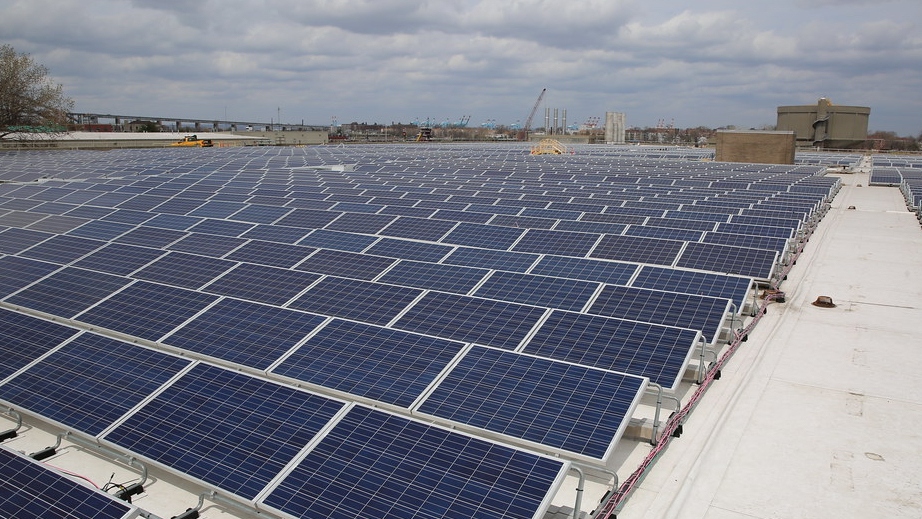
This story was originally published by Canary Media.
One year ago, New York State passed one of the nation’s most ambitious clean energy and climate justice laws. The Build Public Renewables Act authorized the New York Power Authority, or NYPA—a state-owned public power utility—to build and own clean energy projects for the first time. If the state falls short of its ambitious climate goals, the law mandates that NYPA act to build renewable energy that will keep the state on track.
Hailed as a major victory for environmental justice and climate advocacy groups, the law also established a program for low- and moderate-income residents to receive credits for clean energy produced by public utilities and allocated $25 million each year to job training for renewable energy, among other measures.
But in the year since, progress on implementing the law has been unclear. Although NYPA says it has made implementing the law a priority by laying the groundwork for future renewable power projects, activists and some policymakers say the utility has so far not been transparent in its planning, making it difficult to determine whether NYPA is on track to transform the state’s energy sector at the pace it requires 2019 climate act.
“The real problem is that there’s not enough transparency in what they’re planning, so it’s hard for us to say how effective it is,” Michael Paulson, co-chair of the coalition Public Power NY, told Canary Media.
Paulson’s group, along with the New York chapter of the Democratic Socialists of America, unions and climate justice organizations across the state, campaigned for four years to pass the Build Public Renewables Act. An modified form of the law finally made it into the state’s annual budget early last May. Activists hoped that strengthening the role of publicly owned power would allow a faster expansion of cleaner, cheaper electricity — and create a structure more accountable to consumers than the dominant. investor-owned utility model.
Over the past 12 months, the authority has taken some initial steps to work with private developers of renewable energy. In January 2024, NYPA issued a request for information from developers and contractors to learn about opportunities for wind, solar and battery energy storage projects. In March, the authority followed up with a request for qualifications to evaluate and pre-qualify renewable developers to collaborate on future projects, to which it receive more than 85 answers.
In January 2025, the power authority is expected to publish a highly anticipated strategic plan, which will outline how and where the utility will develop renewable energy projects in a way that benefits disadvantaged communities and meets the state’s climate goals. “Our goal is to maximize the renewable generation we can bring online to New Yorkers,” Paul DeMichele, manager of media relations for NYPA, said in a statement to Canary Media.
But so far, advocacy groups and lawmakers heavily involved in writing and passing the legislation have criticized how NYPA has chosen to run the program. At a March 26 meeting of the authority’s board of trustees, NYPA President and CEO Justin Driscoll revealed that the organization hired the consulting firm McKinsey to help implement the plan and “ensure our operating model internally and our internal management around the expansion of renewable energy for the state.” DeMichele told the publication Hell Gate that “McKinsey was engaged through an open bidding process to help us better understand where private developers have been challenged while developing renewable projects.”
Sarahana Shrestha, a Democratic member of the New York State Assembly and longtime supporter of the Build Public Renewables Act, told Hell Gate that “McKinsey’s way of doing business is the complete opposite of what we designed the bill to do.” The consultancy has come under fire for its role in a corruption scandal with South Africa’s electric utility company, among other high-profile issues. Shrestha and New York State Senator Michael Gianaris recently introduced bill to require more frequent public reports and hearings on the authority’s implementation of the Build Public Renewables Act.
Meanwhile, the power authority will have to navigate the challenges facing the offshore wind industry – a pillar of the state’s mandate to meet 70 percent of its electricity needs with clean power by 2030. In recent months at least five offshore wind projects In New York has been cancelled due to rising costs and supply chain issues, which cast doubt on the state’s ability to meet its decarbonisation target. New York is currently on track to meet less than 57 percent of the expected 2030 demand with renewable energy.
For Paulson of Public Power NY, the sector’s struggles are another reason to rely less on private developers and to strengthen the public power sector. “It’s becoming increasingly clear that the New York Power Authority and public power simply need to step up and play a significantly larger role if we’re going to have any chance of meeting these legally mandated climate goals,” Paulson said.







